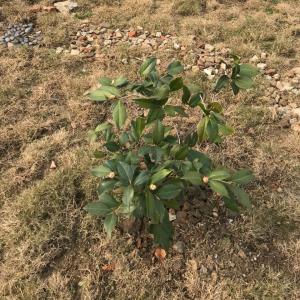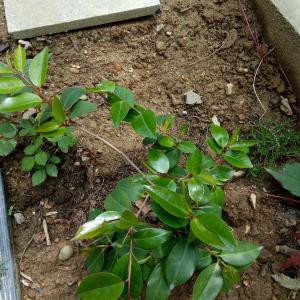动态 (175)
Zeev Kwan
2022年10月19日

1. Avoid over-washing your hair
The most common mistake men make is washing their hair too frequently. You should wash your hair twice or thrice a week and condition it every time. This would safeguard the hair's health and prevent the loss of essential oils.2. Always dry your hair gently
There is no doubt that hair is weaker when wet and more prone to damage. You should avoid rubbing your hair after it has been washed, as this will cause excessive breakage. Avoid stressing your scalp by patting it dry instead.3. Remove your comb-over
Your hair may be thinning. If your hair is thinning, get a haircut that suits you. Comb Overs must never be done.4. Apply egg conditioner to your hair
Sulfur and proteins are essential minerals for healthy hair, and eggs are loaded with them. Using egg yolk regularly as a conditioner for your hair will enable you to utilize all the benefits of the egg. You can strengthen your follicles from within by letting the egg yolk penetrate deeply into your scalp.5. Ensure that your hair is protected from chlorine
Swimming pools contain chlorine, which can cause your hair to become brittle and dry. To prevent your hair from chlorine's damaging effects, wash it with clean water and apply a mild conditioner before entering a pool. Swimming caps can also be worn as an alternative.6. Don't use too many hair products
Any hair product used too much will make your hair appear unnatural and heavy. The right way to style your hair is by using a minimal amount of these products.7. Wash your hair with a clarifying shampoo
Hair products can build up over time and cause your hair to look dull and lifeless. The only way to remove all the built-up and keep your hair shiny is to use a clarifying shampoo. The pH level of your hair can also be balanced by using white vinegar as a hair rinse. Even though it sounds strange, it's really effective.8. Wash once, don't repeat
Using shampoo twice is a myth that must be dispelled. Don't be fooled by advertisements on television that tell you to wash, rinse, and repeat to get the best results. Once you have washed your hair, you don't need to rewash it.9. Reduce the heat
Don’t use hair dryers to dry your hair. Allow hair to dry naturally. You might have to wait for a while, but it will surely keep your hair from frizzing. When using a hair dryer, keep the heat setting low.10. Keep it natural
Repeating chemical treatments can damage your hair beyond repair, so limit coloring, perming, straightening, etc.Texture-based hair types
Texture and thickness are the two categories of hair types. To have genuinely great hair, you need to identify your hair type and learn how to maintain it.Straight hair
Straight hair lacks any definitive curl, making it easy to distinguish. Straight hair holds up well despite poor weather, poor styling, and high heat. Natural oils flow freely into the hair follicles from the scalp since the hair is straight. The result is naturally shiny straight hair. If the hair is not washed regularly, this oil will build up quickly, giving it a "greasy" look. Keeping the oil issue under control makes this hair type easy to manage. Maintenance: Oil buildup is your hair type's biggest enemy. You should shampoo your hair frequently, at least once a day. This hair type won't need much maintenance, so a shampoo that focuses on deep cleaning is an excellent choice. Also, you might want to consider a volumizing shampoo, which is lighter than other shampoos.Wavy Hair
It is a perfect blend of straight and curly. Unlike straight hair, wavy hair is more likely to suffer frizz due to excessive oil buildup. Natural waves have a lot of natural volume and texture, making them desirable. Maintenance: While shampooing is necessary, conditioning is more critical for wavy hair. You'll have less frizz if you use a great conditioner, which keeps your natural wave intact.Curly hair
Multiple curls are present in an inch-long strand of hair when it is curly. It is prone to damage, especially frizz because curly hair tends to get thick and doesn't build up too much oil. If you can manage to keep your curls from frizzing, it’s great! Achieving this look is a goal for some guys. Instead of trying to get rid of your curls, embrace them. Maintenance: Regularly shampoo and condition the hair. Water temperature is critical here. To avoid frizz, you should lower the temperature. Frizz can be eliminated with an Argan Oil treatment. Don't brush curly hair when it's dry. Be gentle with it, as it is easily damaged. Using a comb while the conditioner is still in the hair is the best method.Conclusion
Knowing your hair type and understanding the basics will help you set up a simple, easy-to-maintain routine. In the case of more challenging hair concerns, like hair loss, you will need to do your research first. A trained healthcare professional may also be able to help you decide on your options.
文章
Zeev Kwan
2022年10月13日

How do whiteheads form?
Cleaning routines, lifestyle habits, and genetics all play a major role in the prevalence of whiteheads. Fluctuating hormone levels can also trigger acne breakouts. The more sebum your skin produces, the more likely it is to clog and create whiteheads. ● Puberty Sebum production increases during puberty as a result of hormonal changes. Young people undergo puberty when their brains release GnRH hormones, which signal the pituitary gland to release two additional hormones called androgens. Hormones like these promote oil production, also called sebum, below the skin. ● Genetics Acne prevalence is strongly correlated with genes since they often determine hormonal changes and skin sensitivity. ● Stress Under stress, acne-prone cells produce excess sebum, which can cause breakouts, including whiteheads, cystic acne, and other pimples. Studies have shown that high-stress levels result in acne breakouts that are more frequent and intense. ● Hormonal Changes Throughout Life There is a higher likelihood of women experiencing hormonal changes beyond puberty due to various life events. Many women find that their hormones fluctuate (around six weeks) during pregnancy, leading to acne outbreaks. In addition, many women experience whiteheads and other acne worsening during their menstrual cycle. Progesterone levels increase when estrogen levels decrease, signaling the glands to produce more oil. ● Personal Habits Acne and whiteheads may also be exacerbated by personal habits. Many studies have found a correlation between certain foods and the prevalence of whiteheads. However, diets have not been proven to be a direct cause. Whiteheads also appear when your body attempts to push out an infection. A small bump indicates that your skin is trying to push out bacteria from an infected pore.Here are some home remedies for whiteheads
Whiteheads don't have to be an expensive problem! Here are a few natural remedies you can use at home to eliminate whiteheads. ● Honey It is well known that honey has antibacterial properties. Honey's high viscosity allows it to coat the skin with a barrier that shields it from infection. Take the appropriate amount of honey and place it in a glass bowl. Add water to make its consistency more comfortable to apply to the skin. Keep this on for 15-20 minutes after applying it to the affected area. Wash off with lukewarm water. ● Aloe Vera As an astringent, aloe vera tightens pores and acts as an astringent. Additionally, it has antibacterial properties that help fight whiteheads. Start by cutting off the flat end of an Aloe vera leaf. Scoop the gel out and directly apply this gel to your skin for 15-20 minutes before washing it off. ● Tea Tree Oil In addition to its antimicrobial properties, tea tree oil has antiseptic properties. Add coconut, jojoba, or olive oil to tea tree oil in a bowl and thoroughly mix it. This mixture should be dabbed onto the affected area with a cotton swab and left on for 15-20 minutes. Use lukewarm water to rinse and then pat dry. ● Witch Hazel Witch hazel reduces inflammation caused by whiteheads due to its ability to inhibit the growth of microorganisms. Put the required amount of witch hazel solution in a bowl. Apply it to the affected area with a clean cotton ball to see the result. ● Coconut Oil Whiteheads are caused by bacteria resistant to coconut oil's antibacterial properties. Ensure that the skin is properly cleansed and dried before applying coconut oil. Massage the coconut oil thoroughly onto the affected skin area for the best possible results.Taking preventive measures:
While it is difficult to completely prevent whiteheads, some things can help: ● Use non-comedogenic makeup. ● Before going to bed at night, remove all makeup from your face. ● Don't touch your face too often. ● Make sure your hair is clean. ● Keep your face clean.When to Seek Medical Help?
The appearance of whiteheads usually goes away within seven days, but you can seek medical attention if they persist. Although not life-threatening, whiteheads during adolescence can affect a person's mental health. Additionally, it can affect one's self-image. Whiteheads may lead to depression or anxiety, so it is essential to consult a healthcare professional if one is experiencing such symptoms.
文章
Zeev Kwan
2022年10月10日

Reasons For Enlarged Pores
● Genes The primary determinant of your pore size is your gene. Large pores are common in some families. ● Age Aging makes your skin lose its elasticity, which causes it to stretch and sag, resulting in larger pores. The thickening of your skin also results in minuscule skin cells gathering around your pores, giving the appearance of larger pores as you age. ● UV damage Large pores can be caused by years of sun exposure. The skin can become thicker due to sun damage, resulting in bigger pores. Sun exposure can also strip your skin of collagen, elastin, and water, causing your pores to sag and look bigger. ● Blocked pore Pores may appear larger than usual when oil and dead skin cells gather in them.Best Ways To Minimize Large Pores At Home
1. Clean Your Face Daily
Wash your face up to twice a day, or more if you play sports or sweat a lot. Using lukewarm water, gently apply a cleanser with clean fingers. Choose a gentle cleanser that isn't too rough and doesn't have any alcohol in it. Don't scrub or rub the skin, and use a clean towel to pat the face dry. This will help get oil and dirt out of your pores and make them less noticeable.2. Exfoliate Regularly
It is important to exfoliate to get rid of dead skin cells present in the outer layer of the skin. Exfoliation also makes the skin brighter and smoother. You won't see your pores stretching out and looking bigger if you remove dead skin cells routinely. Exfoliants come in two types: ● Physical exfoliators: These cleansers have tiny scrubbing particles you can feel with your hands. Face scrubs help remove dead skin cells from your face by buffing and sloughing them away with granule-filled formulas. ● Chemical Exfoliators: AHAs and BHAs are two subcategories of chemical exfoliants: Alpha Hydroxy Acids generally come from natural sources such as sugar cane glycolic acid, milk lactic acid, apple malic acid, citrus citric acid, and grapes tartaric acid. We can use these acids to enhance our skin's natural moisture levels, reduce wrinkles and fine lines, smooth rough skin texture, and improve dull, uneven skin tone because they are water-soluble. Salicylic acid is usually considered a beta hydroxy acid. AHAs are like BHAs but penetrate deeper into the skin and inside the pores. However, you should not exfoliate your skin too much. Skin can become dehydrated and inflamed if the protective layer of the skin is stripped away. Exfoliation frequency, intensity, or type should be decreased if this occurs. The type of exfoliator you choose will depend on your skin type.3. Use Sunscreen
Wearing sunscreen is essential. When exposed to the sun constantly, pores sag and stretch around the edges, making them appear larger.Procedures to Minimize Pores
● Chemical Peels It is best to use chemical peels to shrink enlarged pores. Chemical peels can improve the appearance and texture of your skin by removing the damaged outer layer. Acid and acid concentrations are essential in determining the peel type. A chemical peel's depth depends on the desired outcome (light, medium, or deep). The best peel will be determined by your dermatologist based on the characteristics of your skin. ● Microdermabrasion The process of microdermabrasion involves the resurfacing of the skin. A mechanical exfoliation removes the dead skin cells on the face's surface in order to reveal more youthful-looking skin beneath. It boosts collagen and elastin and promotes healthy skin by stimulating microcirculation and oxygen production through minimally invasive microdermabrasion. ● Micro-needling Pores can also be reduced with micro-needling. Collagen and elastin are formed in the skin through controlled micro-injuries caused by tiny needles. As the skin repairs, wrinkles become softer, and the epidermis becomes thicker. Micro-needling also creates microchannels for the skin to absorb topical gels, creams, serums, and other products more effectively, improving the deeper layers of the skin.Conclusion
To prevent breakouts and reduce the appearance of large pores, a variety of treatments are available. Skin care regimens can help improve the overall appearance and health of the skin for many people. Doctors or dermatologists can provide more advice if at-home treatments fail.
文章
Zeev Kwan
2022年09月29日

Causes Of Dry Skin Around The Nose
1. Weather - Weather conditions such as cold air and harsh winters can contribute to dry skin, especially if you're not protecting your skin. 2. Hot water - Cold winters may entice people to indulge in long, hot showers. This may irritate the skin, leading to dryness. 3. Dehydration - Not drinking enough water dries the skin as it does not get the required moisture. 4. Type of skin - Dry skin around the nose is more common in certain skin types, especially those who already have dry skin. However, people with combination skin can also experience dryness. 5. Age - A person's skin can become thinner and lose moisture as they age. 6. Skincare products - Dry skin can be caused by overwashing and using harsh skin care products.What can be done to remove flakiness around the nose?
Here are some simple tips and remedies that can help treat this condition.Use glycerol-containing products
Use glycerol-based creams to soothe dry, flaky skin. This substance hydrates the skin by forming a protective barrier and locking in moisture. The antimicrobial properties of glycerol also promote wound healing, which reduces itching and redness. DIY moisturizers and serums can also be made using pure glycerol. It is even more important to moisturize your skin when the humidity levels drop in the air.Purchase a humidifier
A humidifier is a good idea if you live in an area with low humidity and dry air. Several skin issues, including dry nose skin, can arise from harsh weather conditions. Allergies may be relieved with the help of a humidifier, which keeps the air inside the house moist. In addition, it will prevent chapped skin due to extreme heat.Use Hyaluronic Acid (HA) Products
The dry, flaky skin around your nose needs to be moisturized and nourished in order to heal. Hyaluronic acid (HA) helps to moisturize the skin as it has regenerative, wound healing, and anti-inflammatory properties. There are numerous HA-containing gels, creams, lotions, and serums available on the market.Wear sunscreen
Dry skin around the mouth and nose can be caused by UV rays from the sun and other environmental pollutants. If left untreated, sunburns near the nose can turn into painful bumps. To prevent sunburns, wear sunscreen whenever you go outdoors. It will also reduce the risks of further damage to the skin.Take care of your diet
Your skin health is directly affected by what you eat. Choosing foods rich in antioxidants and omega-3 fatty acids can keep your skin supple and prevent dryness. Regular consumption of flax, hemp, and chia seeds will hydrate and soften your skin. Flaxseed oil reduces dryness and roughness. Eat enough fruits and vegetables as well.When Should You See A Doctor?
Consult your dermatologist when: ● The skin around the nose changes in color or texture. ● Touching the skin may cause pain or cause the skin to feel stretched. ● Despite using moisturizers and other remedies regularly, the skin is dry. ● The problem seems to worsen as the skin gets drier. ● A mole or any suspicious growth is present.Is dry skin around the nose easy to heal?
Using the right products can help improve dry skin and flaky scales around the nose within 8-10 days unless caused by an underlying medical condition. Continue the treatment for at least three to four months if you want sustained improvements in your skin condition. Maintain a holistic, healthy lifestyle as well.Nose Dryness: How To Prevent It
One can take a few precautions to prevent itchy and dry skin around the nose. Here's what you need to know. ● The powder shouldn't be used on dry skin around the nose. ● Showers longer than 15 minutes can dry out your skin. ● Shower with lukewarm water because hot water will dry your skin out. ● Be aware of reflective surfaces, such as water, snow, and ice, and apply sunscreen with a high SPF. ● Dry skin around the nose may result from medications that make your skin more sensitive to sunburn. ● Hydrate your skin regularly with a moisturizing facial mist. ● Don't use products that exfoliate or irritate the skin frequently. ● To maintain healthy skin, adopt a healthy lifestyle. ● Be sure to remove all makeup with an oil-based makeup remover before bed. Consult a dermatologist if the problem persists, as it could signify something more serious.
文章
Zeev Kwan
2022年09月28日

Skin Benefits of Papaya
1. Papaya makes the skin smooth and radiant as it provides moisture. 2. Papaya can counteract the symptoms of aging. 3. Papaya lightens skin tone and prevents tanning. 4. Papaya is helpful in fighting acne. 5. Papaya can help you to get rid of dark circles.The Various Form of Papaya
Fruit
The benefits of papaya can be enjoyed whether raw, ripe, or cooked. The pulp of papayas can be consumed and used topically as a facial mask. Mashed papaya pulp can also be mixed with honey, turmeric, lemon juice, or egg white (according to your skin's needs). It can be used for removing tan, exfoliating, hydrating, or nourishing your skin.Seeds
Your skin can also benefit from papaya seeds. Antioxidants such as polyphenols and flavonoids are found in abundance in these foods. Your skin cells can be protected from oxidative damage by papaya seeds' antioxidants and phytochemicals.Leaves
You can consume papaya leaves or apply them topically for soft, clear, and youthful-looking skin. Papain, an enzyme that dissolves proteins, is also found in papaya leaves. As a result, the leaf extract can be applied topically to exfoliate the skin, clear clogged pores, and treat acne.Paste
The market offers raw and ripened papaya paste, but opt for organic whenever possible. Do not use meat tenderizers designed for cooking.Soap
Getting papaya's health benefits is easy with this method. You can lighten your skin, reduce irregular pigmentation, and increase collagen production with organic papaya soap containing fruit extracts, vitamins C and E, and antioxidants.Juice
Papaya juice can provide instant hydration and glow, whether homemade juice or a packed version. As potassium is present in the juice, it moisturizes and removes dullness from the skin.Raw Papaya
Papain is a substance found in green papaya. Therefore, it works excellently in removing the dead skin layer from the skin.How To Use
Your unique skin type will determine how you use papaya for maximum benefit.Dry Skin
Make your dry skin glow with a pack made of papaya pulp, milk, and honey. Mix milk and honey with half a cup of mashed papaya pulp. Then apply the paste to your face and neck. After 15 minutes, rinse off with water. It is recommended that, for best results, do this once or twice a week.Oily skin
Vitamin C is found in both papaya and oranges. Natural astringents derived from their juices are believed to reduce sebum production. Chop papaya and blend it with orange pulp until smooth. Use the mixture on your face and neck. Leave it on for 15 minutes. Rinse with cold water afterward.Irritated Skin
Moisturizing and lightening the skin is possible with a cucumber, banana, and papaya pulp face pack. Anti-inflammatory and anti-acne properties of papaya help reduce itchiness and redness of the skin. Apply the face pack for 15 minutes, then wash it off.Acne-prone skin
Enzymes found in papaya help unclog pores and cleanse the skin. Additionally, it kills bacteria that cause acne when combined with honey and lemon juice. Mix papaya with honey, lemon juice, and sandalwood powder. Then apply it to the face and rinse with water after 15 minutes.Conclusion
There are multiple ways in which papaya can benefit your skin. It is not only the fruit that is beneficial for your skin but also its leaves and seeds. There are many ways to enjoy papaya's benefits, including its gel, powder, seed oil, soap, packs, etc. Take advantage of papaya's goodness and nourish your skin!
文章
Zeev Kwan
2022年09月20日

What is tooth enamel?
Tooth enamel is a dense mineral that covers each tooth's crown. It is one of the strongest tissues in the body; even harder than bone. Enamel protects the sensitive dentin and pulp areas within a tooth. When your enamel is damaged, it is common to experience pain or sensitivity to hot or cold foods and drinks. Dentin and pulp are also susceptible to bacteria, which can cause cavities, tooth decay, and other uncomfortable dental issues. Foods and drinks you consume cause enamel erosion primarily because of the acids they contain.The following foods can erode tooth enamel:
1. Natural acidic foods like apples and berries 2. Fruits containing citric acid 3. Sugary foods, such as ice cream and caramel 4. Starches such as white bread and potatoes 5. Drinks that contain acid, such as juices and soft drinks The acid in your mouth is neutralized by saliva, a naturally occurring agent. However, consuming too many acidic foods will interfere with saliva's ability to maintain good oral health.Common reasons for tooth erosion
1. A lack of dental hygiene
There are about 700 species of bacteria living in the oral cavity. In most cases, these microorganisms are harmless or benign, but others play a role in digestion. In some cases, they can even protect the gums and teeth from disease. There are, however, many other factors that contribute to tooth decay and gum disease. Food and drink leave carbohydrates behind for these bacteria to feed on. During the digestion of carbs, these bacteria produce acids on the teeth. When these acids mix with saliva and other bacteria in your mouth, they form plaque. The plaque on teeth contains millions of bacteria that attack the enamel. These repetitive attacks eventually cause the enamel to weaken. To avoid this, brushing and flossing twice a day is necessary.2. Using Wrong Mouthwash
In germicidal mouthwashes, chlorhexidine gluconate is used as a disinfectant and antiseptic. Even though it is effective in fighting bacteria, it also increases tartar formation. Dental plaque hardens into tartar, so you should never let it build up on your teeth. Germicidal mouthwash can still be gargled with, but only for a short period. 30 minutes after gargling, you should refrain from drinking, eating, or rinsing.3. Drinking soda
There are 42.11 grams of carbon in 100 grams of sucrose or table sugar. The sugar content of a 325 ml can, or bottle of Coca-Cola is 39 grams. The carbon and sugar in soda interact with the bacteria in your mouth every time you drink it. The acids then attack the teeth even more and the enamel breaks down over time as a result of these attacks.4. Consuming too much citric acid
The citric acid in orange and apple juice can wear down the enamel, despite their health benefits. These juices contain citric acid, which can be five times more corrosive than some sodas. Additionally, these acids can cause white marks to appear on your teeth. It is not necessary to completely eliminate them from your diet, but if you consume them, rinse well afterward with plain water to let the acids wash away.Signs of enamel erosion
Depending on the stage of enamel erosion, the signs can vary. Here are a few examples: Sensitivity - During the early stages of enamel erosion, certain foods, such as sweets and hot or cold foods, may cause a twinge of discomfort. Discoloration - Dentin is exposed as the enamel erodes, causing yellowing of the teeth. Cracks and chips - Enamel erosion results in rough, irregular, and jagged edges on teeth. Cupping - You can see indentations on the surface of your teeth when you bite and chew. A tooth with eroded enamel is more likely to develop cavities or decay. During a cavity's growth and penetration, nerve fibers can be damaged, resulting in an extremely painful abscess or infection.What can you do to prevent enamel loss?
Keeping teeth healthy requires brushing, flossing, and rinsing with fluoride and antiseptic mouthwash daily. Regular dental checkups and cleanings are recommended. Here are some ways to prevent enamel loss: 1. Avoid citrus fruits, juices, carbonated sodas, and other highly acidic foods and drinks. For more effortless enamel protection, eat acidic items at mealtimes. Alternatively, you can switch to low-acid orange juice. 2. When drinking acidic drinks, use a straw. Drinking through a straw, the liquid spills to the back of your mouth, avoiding your teeth. 3. Drinking milk or eating cheese can be an excellent way to end a meal. Acids will be neutralized by this. 4. If you have a dry mouth or low saliva volume, drink more water throughout the day. 5. Brush your teeth with fluoride toothpaste. Your toothpaste should contain fluoride as an ingredient since fluoride strengthens teeth. 6. Avoid brushing too hard. Use a soft toothbrush. 7. You may be able to prevent enamel erosion and tooth decay by getting sealants from your dentist.
文章
Zeev Kwan
2022年09月19日

Sugar lowers mouth's pH and attracts harmful bacteria
Harmful bacteria are attracted to sugar like a magnet. Streptococcus mutans and Streptococcus sorbrinus are two destructive bacteria found in the mouth. These bacteria feed on sugar in your diet and produce dental plaque, a sticky, colorless film on your teeth. When plaque forms in the mouth, it creates an acidic environment which ultimately results in cavities. An acidic or basic solution is measured by the pH scale, with a pH value of 7 being neutral. A pH below 5.5 destroys minerals and the enamel of the teeth. A small hole or erosion will result because of this process. Eventually, they will grow into one large hole or cavity.The effects of a high sugar intake on your teeth
In addition to other health issues, you are most likely to develop dental disorders if you do not watch your sugar intake. High sugar intake is associated with two dental health concerns:1. Tooth Decay
Tooth decay is one of the most prevalent dental disorders caused by sugar and its chain reactions. Tooth decay can be accelerated by bacteria in the mouth, poor tooth cleaning, excessive snacking, and sugary drinks. Dental decay is a common and easily preventable disease. Yet, per the Centers for Disease Control, 13.2% of children aged 5 to 19 and 24.9% of adults aged 20 to 44 continue to suffer from dental caries.2. Tooth Abscess
Dental caries, which can result in an abscessed tooth, is commonly caused by consuming sugary beverages and foods. When a bacterial infection causes a tooth abscess, pus fills the pocket. An abscess is a severe dental infection, so you may lose your tooth if left untreated. Aside from being bad for your teeth, sugar can also affect your general health by affecting blood glucose levels and leading to Type 2 diabetes, obesity, cancer, and heart disease.What Dietary Habits Cause Tooth Decay
1. Eating high-sugar foods
Take a moment to consider that sugary snack before you reach for it. Studies have found that eating sweets and sugary drinks frequently results in cavities. Eating sugary snacks often increases the exposure of your teeth to various acids that dissolve teeth, causing decay.2. Drinking beverages with sugar and acid
Juices, sports, and energy drinks are the most common sources of liquid sugar. Aside from sugar, these drinks contain high acids that can damage teeth. A large Finnish study found that drinking 1–2 sugar-sweetened beverages daily increases the risk of cavities by 31%.3. Consuming sticky foods
Candy, breath mints, and lollipops are "sticky foods" that cause tooth decay. Sugars are gradually released from these foods since you retain them in your mouth for longer. Doing this gives your mouth's harmful bacteria time to digest the sugar and produce more acid. Due to this, demineralization occurs for longer periods than remineralization.What Can Be Done?
1. Make sure that your diet is based on whole grains, fruits, vegetables, lean meats, legumes, dairy products, and low-fat dairy products 2. You can reduce the amount of sugar in a recipe by half when cooking. Usually, this isn't noticeable. 3. You can experiment with healthier recipes with lower fats, sugars, salts, and fiber levels. 4. Consume less sugar in cereals, coffee, and tea. Sweeten cereal with fruit or yogurt and tea with honey if you prefer natural sweeteners. 5. Check labels for sugar amounts and buy products with 'no added sugar' or 'low sugar.' 6. Consider tinned fruit with natural juice or water instead of syrup. 7. Snack on yogurt, fresh fruit, or small amounts of nuts instead of biscuits and chocolates.Protect Your Smile
The amount of sugar you consume can dramatically impact your oral health. Sugar increases bacterial growth, which leads to tooth decay and the loss of protective enamel. An oral hygiene routine that includes avoiding sugary foods is a great start, but it's only one part of the solution. A healthy smile can be achieved by brushing, flossing, and visiting the dentist regularly.
文章
Zeev Kwan
2022年09月14日

Demineralization of the Teeth: Signs and Symptoms
The following signs and symptoms characterize demineralization of the teeth.1. The appearance of white spots on the teeth
Minerals are lost from your teeth during the first stage of demineralization. White spots will appear on your teeth when this occurs. Tooth decay begins with the loss of minerals in these areas.2. Tooth Sensitivity
Dentin is a softer layer underneath the enamel and is more susceptible to damage from mouth acids. In other words, tooth decay will cause rapid damage if it reaches the dentin. When your dentin is damaged, you will likely experience tooth sensitivity.3. Swollen gums and fever
Infections may result from tooth decay advancing into the pulp. The lower portion of your tooth becomes infected when swelling worsens, leading to an abscess. Abscesses are characterized by severe pain, swelling in the jaw, face, and gums, as well as fever. Neck lymph nodes may also swell in some patients.4. The presence of dark brown spots
Enamel will be further damaged if you do not take preventive measures to stop tooth decay. The tooth will now appear dark brownish when the white spots turn brown. You will also have tiny holes in your teeth if your enamel is weak. This is caused by dental cavities.5. Having a toothache
A tooth's pulp, which contains blood vessels and nerves, is its most sensitive layer. Additionally, these nerves provide sensation to the teeth. A compromised dental pulp can swell. Such inflammation causes immense pain and discomfort to the surrounding tissues, which exert pressure on the nerves.Remineralize Your Teeth
1. Maintain good oral hygiene
Brushing your teeth regularly is vital to remove bacteria from them. Streptococcus mutans is primarily responsible for dental cavities (also called dental caries). A study published in 2016 suggests that food and drink are routes of transmission for these bacteria. The bacteria that cause mineral loss and cavities can be removed from your teeth by brushing regularly.2. Boost saliva production
A key component of tooth enamel repair is maximizing saliva production. Saliva contains important components that neutralize acidic elements and restore minerals lost due to acidic diets. Calcium and phosphate are two of these essential components. Your body also defends itself against cavities with saliva.3. Make sure you drink enough water
In addition to supporting remineralization, tap water containing fluoride helps to replace some of the calcium in enamel. Your teeth can also be protected against acid damage by rinsing with fluoridated tap water following a meal or drink that contains acid.4. You need the right toothpaste
Your teeth can also be remineralized with fluoride, another naturally occurring mineral. Your teeth become more resistant to mineral loss when it forms a stronger building block called fluorapatite. Fluoride toothpaste can be used daily to brush your teeth. Toothpaste containing hydroxyapatite can also help repair teeth. In a study conducted in 2019, fluoride toothpaste was compared to toothpaste containing 10% hydroxyapatite. Mineral breakdown and cavities were prevented by hydroxyapatite toothpaste as effectively as fluoride toothpaste. However, more evidence is needed on these products.5. Eat a healthy diet
Some foods can help remineralize teeth that acidic foods and drinks have damaged. A diet rich in whole grains and lean proteins such as fish, eggs, and beans, as well as milk, cheese, yogurt, and fruits and vegetables that are rich in fiber, will help remineralize the enamel, improve saliva production, and provide a healthy dental environment. Reduce your intake of starchy, sugary foods and drinks.6. Stay away from acidic drinks
Fruit juices, sports drinks, and sodas all contribute to demineralization. These products contain high levels of sugar as well as high levels of acid, which wear down enamel and can lead to demineralization.7. Chew sugarless gum
It has been debated for decades whether gum promotes dental health, but studies suggest that sugarless versions may do so. A study concluded that sugar-free gum removes sugar, plaque, and carbs from teeth while also increasing saliva production. Mineral loss may also be prevented by gum. Consider chewing sugarless gum after or between meals to reap the benefits of remineralization.Remineralization of teeth: How long does it take?
Changing your diet and daily habits can help your teeth remineralize. Mineralization occurs 24 hours a day, but tooth repair takes time. A damaged enamel will need dental care to be repaired.To summarize:
Every day, teeth are exposed to elements that cause mineral loss. Throughout your life, your teeth are subjected to a lot of stress from food, drinks, saliva, and bacteria. Too much demineralization can ultimately wear down your teeth, even though they are designed to withstand these elements. In addition to consulting your dentist regularly, you can take steps to remineralize your teeth and stop any current demineralization.
文章
Zeev Kwan
2022年09月12日

What is plaque?
Plaque builds up on teeth as a sticky film. In addition to harboring bacteria, this film can contribute to gum disease and tooth decay. Your teeth can wear away due to acid produced by bacteria in plaque. As a result, you will be at greater risk of losing your teeth or developing gum disease. Maintaining good dental hygiene can help you avoid these severe complications. Plaque can become hard yellow-brown tartar if good dental hygiene is not practiced.Plaque removal: How do you do it?
Plaque deposits on your teeth can have severe consequences if not removed. Plaque build-up can be removed via the same methods your dentist uses in his bi-annual dental exams if it gets out of control:1. Using an electric toothbrush
Plaque can be removed more effectively with an electric toothbrush. You can brush your teeth with either a regular toothbrush or an electric toothbrush to remove plaque between your teeth. Using an electric toothbrush for this task is more efficient than a regular one. With most electric toothbrushes, you can also set a timer to ensure that you brush for the minimum necessary time, reducing plaque build-up on your teeth. Set a 2-minute timer on your phone if you use a manual toothbrush.2. Using mouthwash
You can reduce the amount of plaque your teeth accumulate by using mouthwash and freshening your breath. The mouthwashes available for fighting plaque range from ones that kill germs (antibacterial) to ones that eat away fats and proteins on teeth and gum lines (enzymes).3. Daily flossing
To use dental floss, run it about four inches into your mouth from one end of your gum line to the other. It is essential to use some pressure until you feel resistance so that you may remove as much plaque as possible.Home Remedies for Removing Plaque and Tartar
Plaque can be kept at bay by practicing good oral hygiene, but tartar may be harder to remove. As tartar is a hardened plaque, it cannot be removed by a toothbrush. It is common for dentists and dental hygienists to utilize a variety of dental tools in their offices to remove hard plaque.1. The baking soda brushing method
Baking soda toothpaste may be more effective than traditional toothpaste at reducing plaque in the mouth, according to a 2017 review. According to an independent review published in the same journal in 2017, toothpaste containing baking soda is unlikely to damage tooth enamel due to its low level of abrasiveness. Additionally, baking soda prevents tooth enamel from demineralizing, a chemical process that removes calcium. The carbohydrate content of food can drastically lower the pH level in the mouth, resulting in an environment that is acidic and demineralizing to the teeth. Using the pH scale, scientists measure a substance's acidity. As the pH decreases, a substance becomes more acidic. Enamel pH is recommended to stay within the range of 5.1-5.5. If pH falls below this range, demineralization occurs. Due to its high pH, baking soda prevents enamel loss by reducing demineralization.2. Coconut oil is good for oil pulling
It is believed that oil pulling improves oral health by removing bacteria from the mouth. This method also helps in strengthening teeth and soothing sore gums. Despite this, the American Dental Association does not recommend this method of removing plaque and tartar. Its efficiency is unclear due to the lack of reliable studies. To maintain good oral health, the ADA recommends brushing twice a day with fluoride toothpaste and flossing once a day. Though, oil pulling is unlikely to cause harm when combined with other ADA-recommended practices.3. Maintaining good oral hygiene
Good dental hygiene ensures the removal of plaque and tartar. ADA recommends using fluoride toothpaste twice a day. A daily flossing routine is also recommended. First, floss between the teeth and hard-to-reach places to remove food and plaque. Brushing will remove plaque on the teeth's surface after flossing. With manual toothbrushes, people can achieve good results. Sealants can also be applied to the chewing surfaces of the teeth to prevent plaque build-up between professional cleanings.4. Water flossers are helpful
Plaque between the teeth may be easier to remove with a water flosser. This tool can remove food and plaque from hard-to-reach places using water pressure. The gums are also massaged. Studies in 2016 showed that a water flosser combined with a manual toothbrush was 29% more successful at removing plaque than string floss alone. Nevertheless, it shouldn't replace traditional flossing; it should be used alongside it.Preventative Measures
The use of fluoride toothpaste twice a day and flossing once a day are the best ways to prevent plaque and tartar build-up on the teeth. It is essential to change your toothbrushes regularly since they lose their effectiveness over time. Preventing and treating oral health problems can also be achieved through regular dental check-ups and professional cleanings.Summary
Tartar and plaque build-up on teeth can cause gum disease, enamel loss, and tooth decay. Other health conditions may also be linked to poor oral hygiene. Getting rid of plaque on your teeth is as simple as brushing twice a day with fluoride toothpaste and flossing once a day with fluoride floss. Home remedies that prevent plaque build-up include brushing with baking soda toothpaste and using a water flosser. Maintaining good oral hygiene also requires regular dentist visits.
文章
Zeev Kwan
2022年09月05日

Dental Cavities
According to a study published in the medical journal The Lancet, 2.83 billion adults and children worldwide suffer from dental cavities, also known as caries, the "most common health condition" among people with permanent teeth. A cavity is typically formed when these two steps occur, resulting in decay: 1. Teeth become coated with plaque. 2. By combining with sugar, the bacteria in the plaque produce acid that damages the enamel. Remedy: Fluoride treatments can reverse decay if caught early enough by you or your dentist. The most common method of treating cavities is fillings. Suppose the decay progresses so far that a filling is not effective, your dentist will likely recommend that the tooth be covered with a dental crown or extracted. It might also be necessary to perform a root canal if the decay reaches your tooth's pulp. The sooner tooth decay is detected, the less likely it is to get worse.Gum Disease
Around half of the adults aged 30 and over are affected by some form of gum disease, also known as periodontal disease, says the Centers for Disease Control and Prevention (CDC). This condition could mean anything from mildly swollen gums to bleeding gums to tooth loss, depending on the severity of the case. The most common stages of gum disease are as follows: 1. Gingivitis is caused by plaque and tartar buildup on your teeth. 2. When gingivitis is present, it affects the soft tissues along the gumline, causing them to swell, which then leads to periodontitis. 3. As a result of periodontitis, the gums pull away from the teeth resulting in pockets. Ultimately, tooth extraction or antibiotics might be necessary if the gum infection worsens. Remedy: It is true that gum disease in its gingivitis stage, if caught early enough, can be reversed, much like cavities. In case it can’t be reversed, your dentist might have to schedule a deep-cleaning treatment to remove all plaque buildup. Antibiotics could be prescribed to you as well. You might need surgery if you have advanced periodontitis.Infectious Diseases
Oral herpes, also known as cold sores or fever blisters, are the most common infectious oral diseases. Children between the ages of 6 months and 5 years are usually affected by the oral herpes virus. Clinically, it is referred to as herpes simplex virus 1 (HSV-1). Infected children will carry HSV-1 for the rest of their lives. A report released by Johns Hopkins Medicine estimates that 50-80 percent of adults suffer from oral herpes - either dormant or active. A formerly HSV-1-free adult who did not contract the virus as a child might contract oral herpes after coming into contact with a child or an adult who is experiencing an outbreak. Be careful where you plant your kisses. It is more likely for HIV-positive individuals to contract bacterial infections, fungal infections, and viral infections. Soft tissues inside the cheeks, the lips, and under the tongue can develop lesions from these infections. As a result, they can cause dry mouth, swallowing difficulties, as well as discomfort or pain. Remedy: Your body builds antibodies to fight the virus once you have had the first bout of oral herpes. As a result, the next time you contract HSV-1, your outbreaks may not be as intense, or the virus may remain dormant. Taking antiviral medication, however, can prevent cold sores from fully developing if you experience the early stages of oral herpes outbreaks. Maintaining a healthy emotional and physical state will minimize flare-ups. Depending on the specific condition, HIV-related infections require different treatment methods.Oral Cancers
According to the Oral Cancer Foundation, nearly 53,000 people are diagnosed yearly with mouth or throat cancer in the US. The most common areas of the mouth where oral cancer develops are the tongue, tonsils, gums, and oropharynx (the section of the throat at the back of the mouth). Oral cancers are often difficult to detect in their early stages due to the lack of clear signs and symptoms. Regular dental check-ups are, therefore, the best way to catch them. When you visit your dental professional, pay special attention to these symptoms for oral cancer screening: 1. A mouth or lip sore that isn’t healing 2. A lump in your mouth 3. Your mouth has a white or red patch 4. Loose teeth 5. Having difficulty swallowing, continuous mouth pain, or ear pain Using tobacco products increases your chances of getting an oral cancer diagnosis. Remedy: Surgery, radiation, and chemotherapy can be used to treat oral cancer, depending on the type and stage at the time of diagnosis.Mouth Injury Trauma
According to the World Health Organization, about 20 percent of people experience dental trauma in their lifetime. Mouth injury trauma can be caused by unsafe conditions, reckless behavior, accidents, or violent acts. Mouth trauma is often caused by sports injuries. It is possible to prevent mouth injuries in sports by wearing protective equipment, such as mouthguards and helmets. Remedy: As soon as you can after suffering an unforeseen injury, seek medical attention. If you act immediately, a tooth that has been knocked out can be replaced. Some injuries call for an expensive treatment that may involve several surgeries. Some of them could be so traumatic that they compromise your psychological health or the health of your entire face. Maintaining your oral health is more than just keeping your teeth healthy - it is also about preventing your mouth from diseases. Regular dental screenings, good oral hygiene, and avoiding certain behaviors can help prevent some oral diseases.
文章
相关用户
















